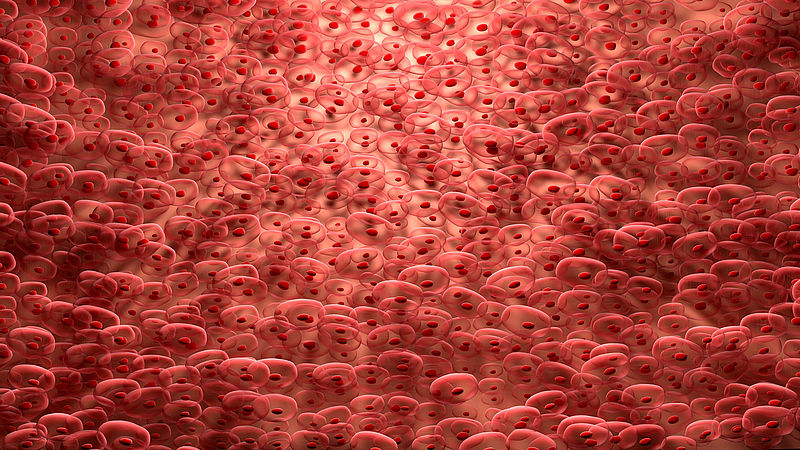The new analysis method can be used to investigate how heart muscle cells communicate after a heart attack. To this end, the researchers identified proteins that play a role in heart attacks. Prof. Dr. Florian Leuschner, Principal Investigator at the DZHK, and Tim Christian Kuhn from the Department of Cardiology at Heidelberg University Hospital have now been awarded the Wilhelm P. Winterstein Prize of the German Heart Foundation for their work. The method, which the two physicians have developed in cooperation with other researchers at the University Hospital, could serve as a basis for possible therapeutic approaches.
Using mass spectrometry to investigate the communication of heart cells
"The research provides important insights into the heart-damaging mechanisms involved in myocardial infarction and other life-threatening cardiac events such as heart failure. Thus, the prize winners and their team may contribute to the development of new therapeutic aspects," emphasises the cardiologist and Deputy Chairman of the Board of the German Heart Foundation, Prof. Dr. Thomas Voigtländer. The Heidelberg researchers' method is based on mass spectrometry, a technique commonly used in science to analyse atoms, molecules, and proteins. "Until now, it has not been possible to comprehensively examine the proteins that are released during the communication of heart cells," explains senior physician and Heisenberg Professor Florian Leuschner. "That is why we have refined mass spectrometry." The award-winning work results were published in May this year in the renowned journal "Circulation".
Saving cells after a heart attack
The two doctors looked at heart cells that are under stress. This is the case, for example, with a life-threatening heart attack, which about 300,000 people suffer in Germany every year. The cause is a blocked coronary artery that no longer supplies the cells with blood. As a result, the heart muscle cells no longer receive enough oxygen and become stressed. Myocardial tissue dies. How much tissue is affected depends on whether a larger blood vessel is occluded or only smaller ones. "At the centre of the infarction, the cells die immediately," says Florian Leuschner, who directed the experiments. "In more distant regions, the cells also suffer from reduced oxygen delivery. But they do not die immediately. These cells could still be saved." This aspect is important to minimise consequential damage after a heart attack. In the heart, connective tissue cells, so-called fibroblasts, increasingly replace the dead heart cells, leading to fibrosis. The heart becomes increasingly stiff and eventually cannot pump enough blood into the body. This can lead to heart failure. "To be able to intervene therapeutically here, a precise understanding of the underlying mechanisms is of great importance," adds Prof. Dr. Norbert Frey, Medical Director of the Department of Cardiology, Angiology and Pneumology at the University Hospital of Heidelberg.
Key protein for fibrosis formation discovered
In their investigations, the researchers placed heart muscle cells from animal tissue in a so-called cell chamber. This is a small box in which living cells can be examined under the magnifying glass in a protected environment. "In the chamber, however, the cells only received 1.5 percent oxygen," assistant doctor Tim Christian Kuhn explains the procedure, "that is significantly less than under physiological conditions. This means that the cells suffered a lack of oxygen and thus stress, just like in a heart attack". The examinations result: The doctors found 42 proteins that were either released less or more by the stressed cells. Some of these were previously utterly unknown in connection with myocardial infarction. "These are the proteins of interest to us," Kuhn emphasises. One of them is the "proprotein convertase subtilisin/kexin type 6" (PCSK6), whose function was previously unknown. In their experiments, the Heidelberg researchers have now discovered that this protein possibly plays an essential role in the development of fibrosis in the heart.
Double benefit for heart patients possible
These results can probably also be transferred to human heart cells. For example, the researchers found increased levels of PCSK6 in the blood of patients after a heart attack. " Blood levels were highest on the third day after the heart attack," says physician Kuhn. Patients after a heart attack could have PCSK6 serving two purposes in the future: Firstly, by therapeutically blocking the protein, thereby slowing down fibrosis and the associated heart failure. Secondly, as a biomarker in the blood, it could indicate that the heart cells are not getting enough oxygen.
About the Winterstein Prize
The Wilhelm P. Winterstein Prize is awarded annually for a scientifically outstanding work in the field of cardiovascular diseases, preferably from a patient-related research area. In 2020 the founder Ursula Winterstein awarded the prize of her husband, who died in 2018, for the Heidelberg researchers' outstanding research project. Further information: www.herzstiftung.de/herzstiftung-und-forschung
Original publication: Kuhn, T. C. et al., Secretome Analysis of Cardiomyocytes Identifies PCSK6 as a Novel Player in Cardiac Remodeling After Myocardial Infarction. Circulation, doi:10.1161/CIRCULATIONAHA.119.044914
Source: Medical University Hospital, Heidelberg
Heart attack research: How do heart cells communicate under stress?



